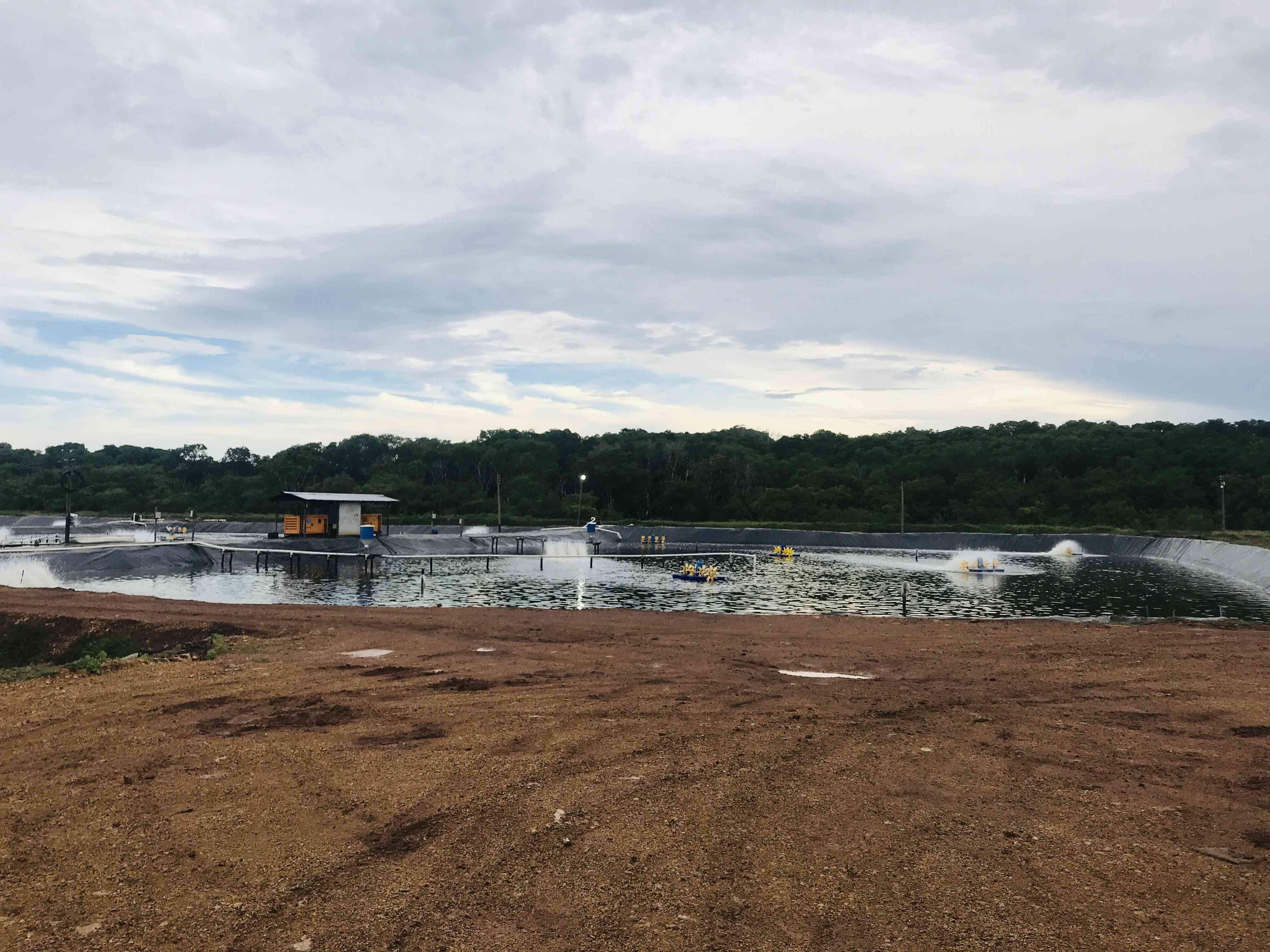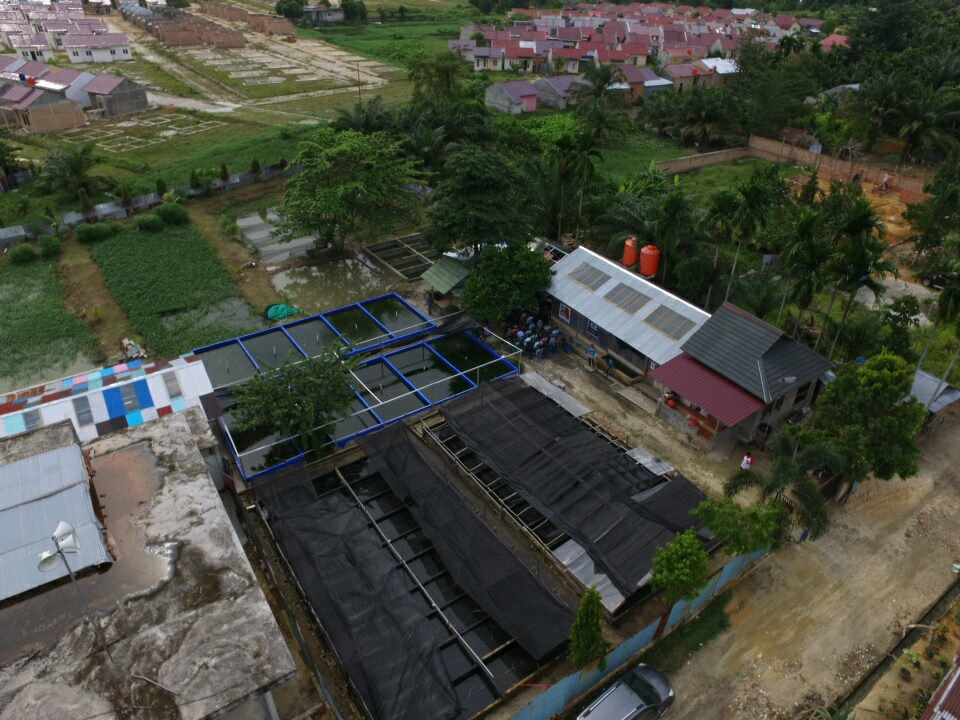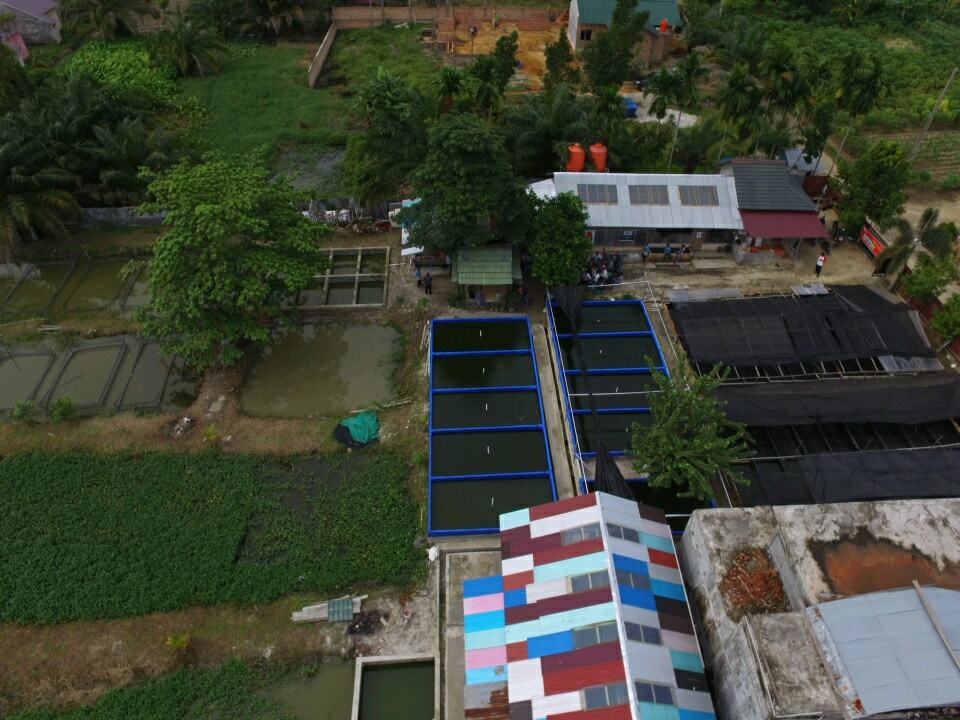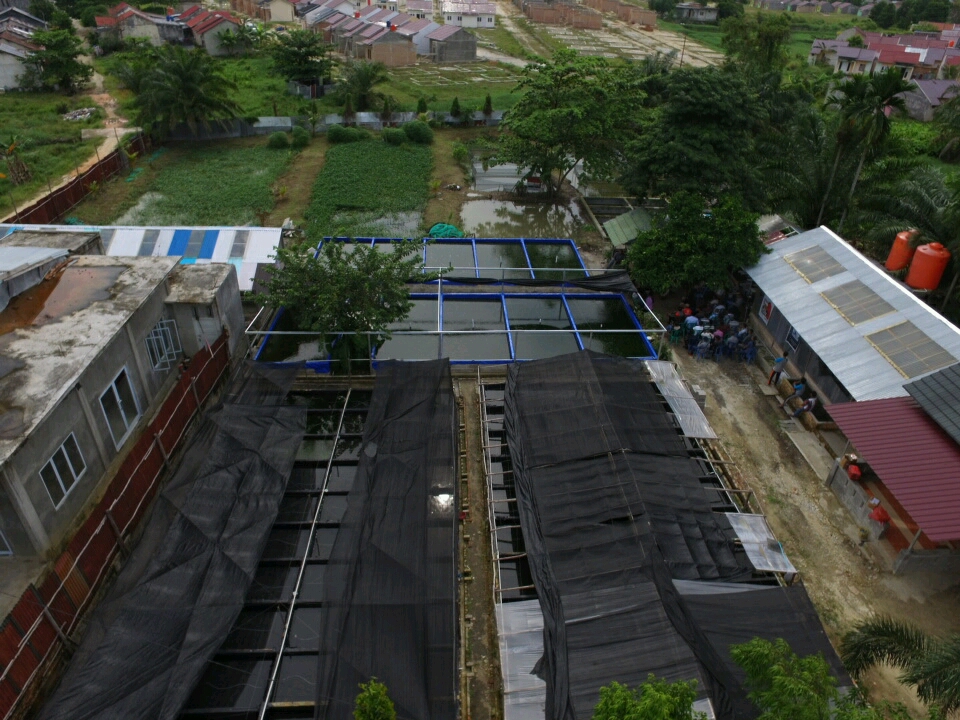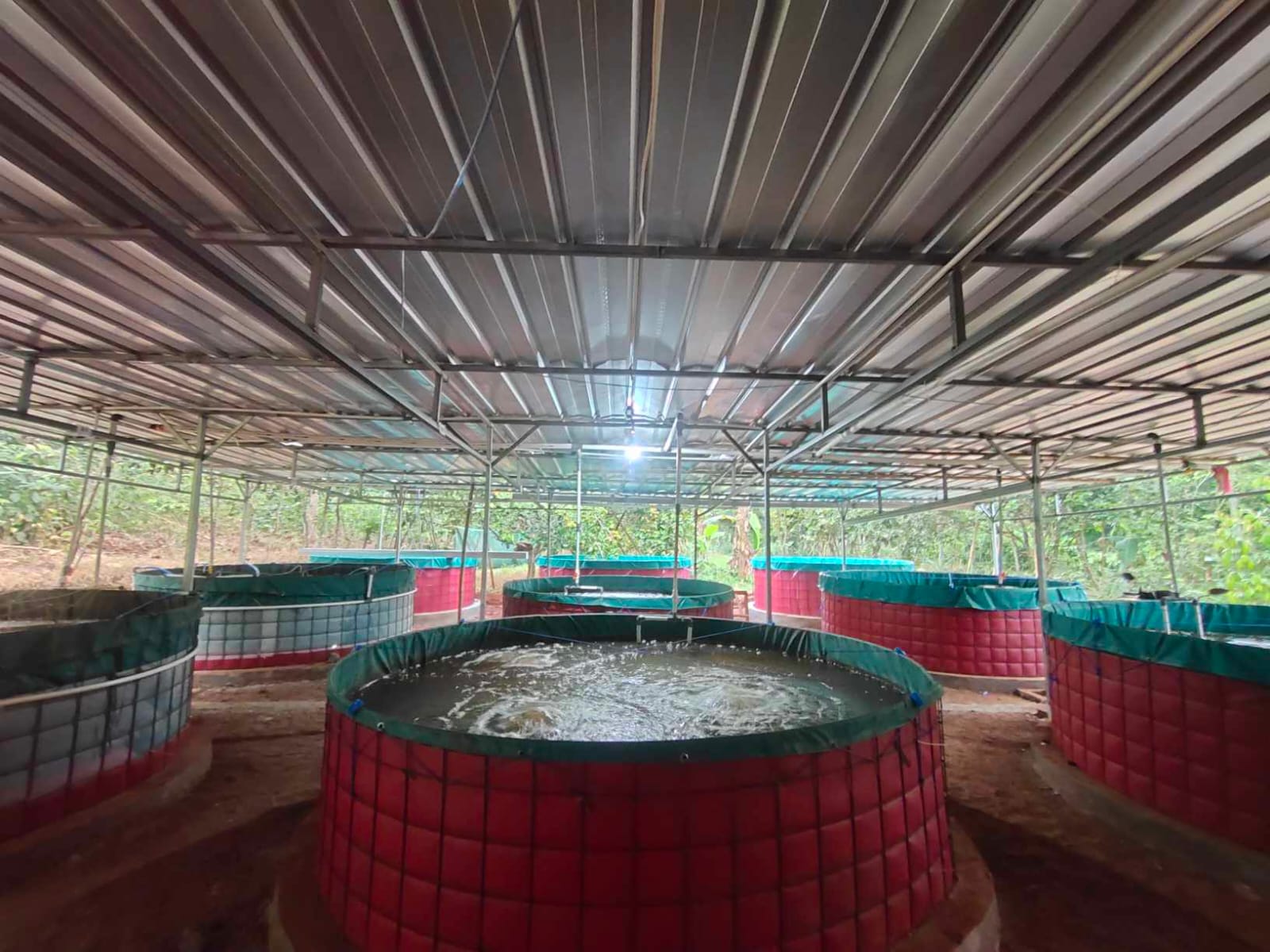Aquatic ecosystems play a crucial role in the cultivation of vannamei shrimp (Litopenaeus vannamei). Maintaining a balanced water quality, ensuring plankton abundance, and regulating bacterial populations are key factors in creating an environment conducive to optimal shrimp growth. Effective aquatic ecosystem management not only enhances productivity but also helps prevent diseases that could negatively impact shrimp farming.
Microorganisms, particularly bacteria, serve a dual function in shrimp ponds. Some bacteria are beneficial, aiding in decomposition and water quality maintenance, while others can be pathogenic to shrimp. One notable example is bacteria from the Vibrio genus, particularly Vibrio parahaemolyticus, which is recognized as the primary causative agent of Acute Hepatopancreatic Necrosis Disease (AHPND) in vannamei shrimp. Research published by Media Akuatik indicates that poor water quality—such as high ammonia levels resulting from the accumulation of uneaten feed and feces—can trigger an increase in Vibrio sp. populations, thereby elevating the risk of disease outbreaks.
Water quality management is the most critical factor in maintaining microbial balance in shrimp ponds. Key parameters such as temperature, pH, salinity, and dissolved oxygen levels must be routinely monitored to ensure they remain within optimal ranges for shrimp growth and pathogen control. Additionally, according to data from FisTX Indonesia, the application of probiotics, such as Bacillus bacteria, has proven effective in suppressing Vibrio sp. growth and improving shrimp health.
So, what practical steps can be taken to maintain a healthy shrimp pond ecosystem?
Regular administration of probiotics
TipTopp Pond, superior probiotics to maintain pond ecosystems
Probiotics such as Bacillus sp. and Lactobacillus sp. play a crucial role in vannamei shrimp (Litopenaeus vannamei) aquaculture. These microorganisms not only help maintain the ecological balance of aquatic environments but also directly contribute to the health and growth of shrimp.
One of the primary mechanisms of probiotics is the production of antimicrobial compounds that effectively inhibit the growth of pathogenic bacteria such as Vibrio sp. Additionally, probiotics compete with pathogens for space and nutrients, thereby reducing the likelihood of harmful bacteria proliferating. A study published in the Jurnal Kelautan Trunojoyo found that administering Lactobacillus sp. at a concentration of 10⁸ CFU/ml enhances the immune system of shrimp while suppressing the growth of Vibrio parahaemolyticus, a pathogen responsible for diseases in vannamei shrimp.
Beyond their antimicrobial functions, probiotics also contribute to the breakdown of organic waste, including leftover feed and shrimp excrement. This decomposition process prevents the accumulation of toxic compounds such as ammonia (NH₃), nitrite (NO₂⁻), and nitrate (NO₃⁻), which can be detrimental to shrimp health. By reducing ammonia and nitrite concentrations, probiotics indirectly help maintain optimal water quality, thereby supporting the healthy growth of shrimp.
The administration of probiotics through feed also has a positive impact on shrimp digestion. Probiotics enhance nutrient absorption efficiency, improve gut health, and strengthen the shrimp's immune system. A study published in the Journal of Aquaculture Science found that incorporating Lactobacillus plantarum into shrimp feed improves growth rates and feed efficiency in vannamei shrimp.
In summary, probiotics serve multiple essential functions in vannamei shrimp farming, from disease prevention to water quality management and digestive health improvement. Their application in aquaculture presents a sustainable and effective strategy for enhancing shrimp productivity and overall farm performance.
Proper feed management
Feeding activity in a vannamei shrimp pond
Feed management is a crucial aspect of vannamei shrimp farming that must not be overlooked. Overfeeding can lead to various negative impacts on both the pond ecosystem and shrimp health. Uneaten feed accumulates at the pond bottom, decomposes, and contributes to increased concentrations of ammonia (NH₃) and nitrite (NO₂⁻), both of which are harmful to shrimp. Furthermore, the buildup of organic matter can promote the excessive growth of pathogenic microorganisms, such as Vibrio spp., which disrupts the ecological balance of the pond.
Excess feed also stimulates uncontrolled algal blooms. When plankton populations collapse, the decomposition process depletes dissolved oxygen levels in the water, leading to hypoxic conditions that disturb microbial balance. This, in turn, negatively affects shrimp health and growth, increasing the risk of mass mortality.
To mitigate these issues, the implementation of effective feed management strategies is essential. Two commonly used methods include:
1. Feeding Rate (FR) table
The FR table serves as a guideline for daily feed allocation, based on a specific percentage of the shrimp biomass adjusted according to age and size. By following this approach, farmers can prevent both overfeeding and underfeeding, ensuring shrimp receive adequate nutrition while minimizing environmental contamination.
2. Feed Conversion Ratio (FCR) calculation
The FCR represents the ratio between the amount of feed provided and the weight gain of the shrimp. A lower FCR indicates higher feed efficiency. Effective FCR management involves regular monitoring of feed quality, shrimp health, and pond conditions to optimize feed utilization and promote sustainable shrimp growth.
Use of safe disinfectants
UV disinfection treatment for water preparation with Baskara UV by FisTX
Disinfectants play a crucial role in maintaining microbial balance in vannamei shrimp ponds by controlling pathogens without disrupting beneficial microorganisms. Pond water often contains pathogenic bacteria such as Vibrio species, viruses, and fungi that can cause various diseases in shrimp. If left unchecked, these pathogens can multiply rapidly, disrupting the balance of beneficial microbes and deteriorating water quality.
Additionally, new water introduced into the pond may carry foreign microorganisms that could disturb the existing microbial equilibrium. Some of these foreign microbes may be undetected pathogens capable of spreading quickly under favorable pond conditions. To mitigate this risk, disinfecting the water before introducing it into the pond is an effective preventive measure to block the entry of new pathogens.
The use of disinfectants also helps reduce stress in shrimp caused by water exchange. Water that has not undergone disinfection may carry pathogens that compromise shrimp health and lower their immune response. Stressed shrimp are more susceptible to disease, making the proper and safe application of disinfectants an essential aspect of shrimp pond health management.
How to implement environmentally friendly disinfection?
Installation of Baskara UV technology as disinfection in Tegal ponds
Traditional shrimp farmers often rely on chemical disinfectants such as chlorine to reduce the presence of pathogenic bacteria in aquaculture systems. However, the use of chlorine can leave harmful residues that pose risks to both the environment and farmed organisms. To promote more sustainable and eco-friendly farming practices, it is essential to adopt effective disinfection methods that do not cause adverse environmental impacts.
One increasingly popular alternative is the use of ultraviolet (UV) technology for water sterilization in shrimp ponds. UV radiation has been proven effective in inactivating a wide range of pathogenic microorganisms without leaving harmful residues. According to data from FisTx Indonesia, both Gram-positive and Gram-negative bacteria can be eliminated with UV doses ranging from 4 to 20 mJ/cm². Moreover, UV treatment does not alter the physical or chemical properties of water, making it a safer option for shrimp and other aquatic organisms.
A specialized device designed for this purpose is the Baskara UV by FisTx, which can eliminate up to 98% of pathogens, offering an effective solution for disease prevention in shrimp ponds. In addition to its high efficacy, Baskara UV provides significant cost savings—up to 81.2% compared to chemical disinfectants. Another advantage is its ability to disinfect water instantly, allowing immediate use in aquaculture systems without the need for waiting periods.
By integrating UV technology into shrimp farming practices, aquaculturists can enhance biosecurity, reduce environmental impact, and improve overall production efficiency—paving the way for a more sustainable future in aquaculture.
*Developed from an article published by FisTx Indonesia



















